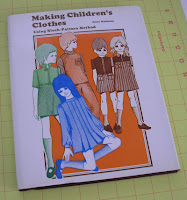



One way to keep up with the latest fashion trends is to read fashion magazines. Over time a designer can get a feel for what is coming next even though fashion magazines focus on the now. It will at least help you keep up with your competitors.
And yet, there are few US children's fashion magazines. Occasionally, I will flip through the latest
Child magazine. Child Magazine has less to do with children and more to do with parents. Their children's fashion section has always been disappointing. The latest issue especially (I am sorry I can't provide a link, so check out the newsstand). The pictures of the fashion section were ALL softened and obscured. Sure, you could get an idea of the feel or mood, but no clue what the actual clothes look like. Their fashion section is usually about 3-5 pages, featuring as many items. The photographs are very well done, but they don't help promote any fashion. Their website is even more annoying with pop-ups, flash, and survey requests.
One the best children's fashion magazines is
Bambini. It is an Italian glossy magazine that comes out only twice a year and is fairly pricey. The issues and pictures correspond with Italian fashion runway shows. Most of the fashion shows are sportswear related and are very forward for the American market. Still, it is worth picking up one every now and then.
My personal favorite, and affordable, childrenswear fashion magazine is
Burda Kids Fashion from Germany. The magazine comes with patterns, a definite bonus. I use the patterns for reference and ideas of how to create innovative fashion. They have lots of details that are forward for the American market, but still practical. Unfortunately, it only comes out two times a year.
Ottobre is a similar magazine out of Finland that comes out four times a year
There are various other childrenswear and fashion/style magazines, but most of them come out of Europe. Some include Enfants (France), Baby & Junior (Germany), Childrenswear Buyer (UK), Divos Moda (Spain), Sasame (Japan), Studio Bambini (Australia), Vogue Bambini (France). There are two main US magazines, but they are definitely trade magazines focusing on business - Childrens Business (which was merged with WWD and is essentially defunct) and Earnshaws. I would really like to see an American version of Bambini. A magazine that has pictures from American childrenswear shows. This is a definite niche that could be filled.
To be fair, there are a few American-based online children's fashion blogs. Many of them focus on celebrity's babies and gossip. Not really that useful for following trends.
What do you read to keep up with fashion trends?








